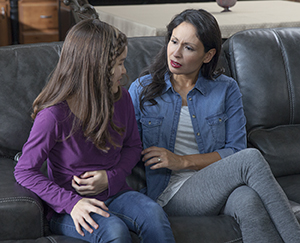Your body needs energy to do things. Energy comes from a kind of sugar found in the food you eat. This sugar is called glucose. Glucose travels in your blood. Without glucose you wouldn’t be able to study, play, or even eat or think. Too little glucose can make you feel sick. This is called low blood sugar (hypoglycemia). Low blood sugar can happen when you exercise. It can also happen when you don’t eat enough. Or when you take too much insulin. If your blood sugar gets really low, it can be dangerous.
What do lows feel like?
Low blood sugar (lows) can make you feel sick. These are some symptoms of low blood sugar:
-
Shakiness
-
Weakness
-
Hunger
-
Dizziness
-
Confusion
-
Grumpiness
-
Headache
-
Sweating
-
Clumsiness
-
Forgetfulness
-
Tingling around the mouth
-
Anger
-
Hunger
-
Upset stomach
-
Nightmares
-
Seizure
-
Unconsciousness
Lows don’t affect everyone the same way. Sometimes people with diabetes don’t feel any symptoms when they have low blood sugar. So pay attention to your body. Learn how it feels and how you act when you’re having a low. And to be safe, test your blood sugar as often as you’ve been told to. Have some fast-acting sugar with you at all times.
You can prevent lows
Don’t let lows get you down. Follow these tips:
-
Test your blood sugar often.
-
Always take your insulin. Take it on time and take the right amount. Talk with your health care provider about exercise, illness, and other times you may need to adjust your insulin dose.
-
Don’t skip meals and snacks. Eat them on time.
-
Check your blood sugar before, during, and after you exercise. This lets you see if you need a snack.
-
If your care team tells you to, eat a snack before bedtime.
You can treat lows
You may get very good at preventing lows. But they will happen from time to time. If you feel like you might be having a low, check your blood sugar right away. Or, have an adult check it.
Then follow these steps:
-
Step 1. Tell your parents or another adult right away that you are having a low.
-
Step 2. Eat or drink 15 to 20 grams of carbohydrate (fast-acting sugar). You can get at least 15 grams of carbohydrate from each of these:
-
3 to 4 glucose tablets
-
8 ounces (a whole glass) of fat-free milk
-
4 ounces (1/2 a glass or can) of juice or nondiet soda
-
1 tablespoon of honey
-
2 tablespoons of raisins
-
-
Step 3. Check your blood sugar again in 15 minutes. It should be at 70 or above.
-
Step 4. If your blood sugar is still too low, eat 15 grams of carbohydrate again. Wait another 15 minutes, then test again.
-
Step 5. If your blood sugar goes back to normal, eat a snack or meal. This is to keep your blood sugar in a safe range.
If after step 4 you still don’t feel well and your blood sugar is still low, have someone drive you to your health care provider’s office or the hospital emergency room.
You may also want to talk with your provider about if you should be prescribed a glucagon shot. Glucagon is a hormone that quickly raises blood sugar. It can reverse serious symptoms. A nasal version of glucagon is now also available. It can be easier to use than the shot.
Playing it smart
Prevent lows by playing it smart:
-
Always carry fast-acting sugar, such as glucose tablets or juice.
-
Know where your glucagon kits are. Glucagon is a shot that raises blood sugar quickly in low-blood-sugar emergencies. Someone in your family or at school will be trained to use the glucagon kit. A kit should be kept wherever you spend a lot of time.
-
Talk with your health care team if your blood sugar always gets low at a certain time of day. Your diabetes plan may need to be changed.
-
Always wear your bracelet or necklace that says you have diabetes. Then people will know how to help you if your sugar gets low.
The low patrol
Lows can happen when you exercise or play. Be aware of how you feel when you’re active and playing sports. If you’re low, tell your parent, coach, or another adult right away. Then take a break and have your blood sugar tested. Or test it yourself, if you can. If you’re low, take fast-acting sugar and eat a snack.
Resources
Still have questions about diabetes? Check out these websites:
Featured in


